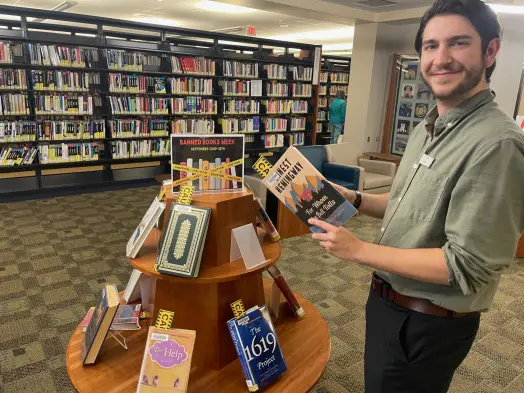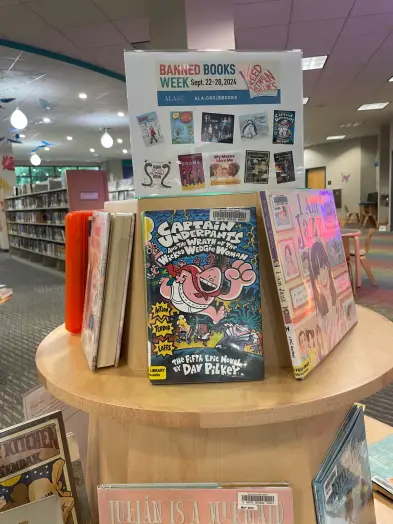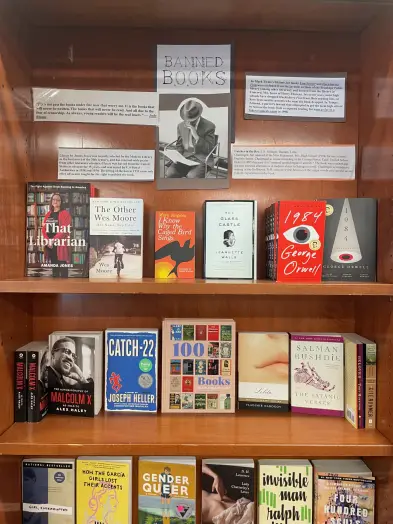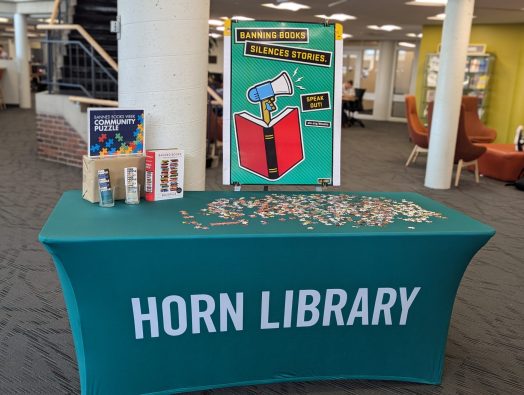Banned Books Week celebrated in Wellesley
Although Wellesley may not seem to be a hot-spot of censorship, Banned Books Week is being observed here as well as the rest of the country.
Banned Books Week is an annual event that takes place this year during the week of Sept. 22-28. The event was started in 1982 as a response to the rise in book “challenges” across the US, primarily from parents concerned about books they objected to being made available to children in schools and libraries. The American Library Association (ALA) now encourages communities to “celebrate” the week by drawing attention to censorship—and hopefully getting readers to check out the books, of which there are many well-known classics.
The Wellesley Free Library, Wellesley High School and Middle School Libraries, Babson College, and the Wellesley Books store all have exhibits showcasing books from the list of over 4,240 unique titles targeted for removal from schools and libraries last year.

At Wellesley Free Library, the Banned Books exhibit was designed by Danny Gage, a reference librarian who joined the staff five months ago. Gage was enthusiastic about putting the display together, stating that “as a librarian, it’s all about fighting censorship. We shouldn’t bar people from seeing books and we’d want to make everything available.”
His personal favorite from the banned book list is “The Perks of Being a Wallflower”, by Stephen Chbosky, which Gage read in high school. “Although the book has dark themes, it was important to me, and I resonated with the characters.” The book has been in the Top 10 list of banned books, challenged by groups demanding its removal from libraries for depiction of sexual abuse, LGBTQIA+ content, drug use, and profanity.

Down the street at Wellesley Books, the display included “Ulysses”, “Catcher in the Rye”, and “Tom Sawyer”. The exhibit was assembled by Lorna Ruby, a long-time staff member who included captions explaining why specific books were challenged, providing a historical context stretching back from 1933 to the present.
“It’s so important for people to understand why the books are being challenged, and giving examples really sharpens why there continues to be a
threat today,” Ruby said. “As a big fan of Margaret Atwood, the fact that the ‘The Handmaid’s Tale’ is on the list speaks to a dystopian vision of the future that we should be aware of.”
Ruby added “Usually the display space is where we put the local school summer reading list, and once that’s over it’s easy to switch – there are a lot of shared titles – and many of these books are being read in schools.”

The Babson Horn Library’s display highlights books in the collection that have been banned at libraries across the country. Emily Miles, library director at Babson College, has also included a survey question asking if users have read a banned book. There is also a jigsaw puzzle of banned books that patrons can participate in putting together.

Other locations where Banned Books Week is being observed include Wellesley High School and Middle School. The displays will be available this week to showcase these books—with the added benefit of encouraging students to check them out and read them.
Last year, Wellesley Free Library held an event about efforts to make the banning of books in public libraries
and schools more difficult, particularly for organized groups seeking to challenge dozens of books at a time for questionable reasons.
Author Malinda Lo last year spoke to Wellesley High students about her novels and writing career, noting that LGBTQ young adult novels are being banned in some states.
It may seem odd to “celebrate” banned books, but the idea is to bring together librarians, educators, authors, publishers, booksellers, and readers of all types to show support for freedom of expression. Wellesley’s community is certainly playing its part to do so.
This report is special to The Swellesley Report from Cimarron Buser.